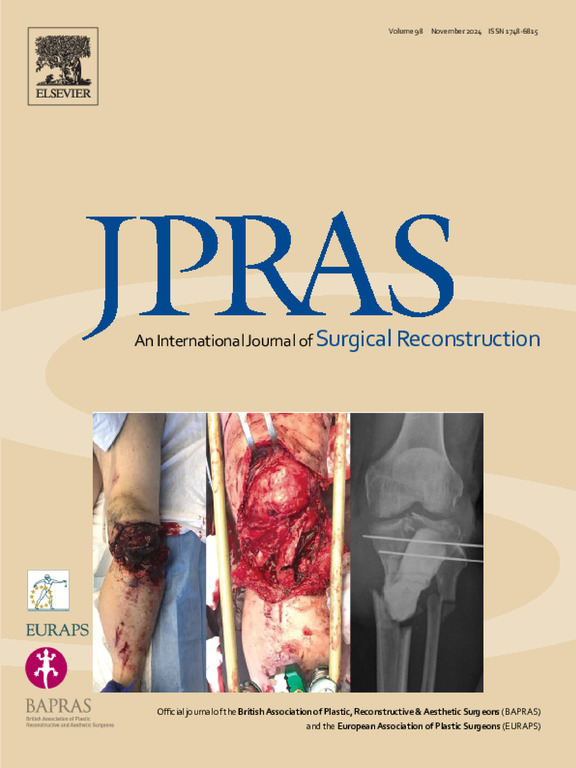Abductor digiti minimi opponensplasty and flexor digitorum superficialis opposition transfer: What are the main indications? A literature review
IF 2
3区 医学
Q2 SURGERY
Journal of Plastic Reconstructive and Aesthetic Surgery
Pub Date : 2025-03-24
DOI:10.1016/j.bjps.2025.02.035
引用次数: 0
Abstract
Thumb hypoplasia is a rare deformity of the hand. Type II and IIIA are the main indications for opponensplasty, together with thumbs with a residual weak opposition after pollicization. Our study operates a review of the current literature to establish which opponensplasty technique is the most appropriate for each patient. We conducted a systematic search using PubMed, Embase, and Web of Science databases. The keywords used were “thumb hypoplasia,” AND “opponensplasty,” “abductor digiti minimi opponensplasty,” “thumb hypoplasia,” AND “abductor digiti minimi,” “opponensplasty,” AND “hypoplasia,” “flexor superficialis opponensplasty,” “flexor digitorum superficialis opponensplasty.” A minimum of 1 year of follow-up was required for inclusion. A total of 222 studies were recovered, of which only 9 articles satisfied our inclusion criteria. From the results obtained, the choice between abductor digiti minimi opponensplasty and flexor digitorum superficialis transfer should depend on the severity of the deformity and the main goal that should be achieved. Children with type IIIA hypoplasia characterized by more unstable joints should undergo flexor digitorum superficialis transfer to restore joint stability. On the contrary, when the instability is not of great concern, abductor digiti minimi opponensplasty, which aims at better defining the thenar eminence and restoring a better global hand function, should be preferred.
求助全文
约1分钟内获得全文
求助全文
来源期刊
CiteScore
3.10
自引率
11.10%
发文量
578
审稿时长
3.5 months
期刊介绍:
JPRAS An International Journal of Surgical Reconstruction is one of the world''s leading international journals, covering all the reconstructive and aesthetic aspects of plastic surgery.
The journal presents the latest surgical procedures with audit and outcome studies of new and established techniques in plastic surgery including: cleft lip and palate and other heads and neck surgery, hand surgery, lower limb trauma, burns, skin cancer, breast surgery and aesthetic surgery.

 求助内容:
求助内容: 应助结果提醒方式:
应助结果提醒方式:


